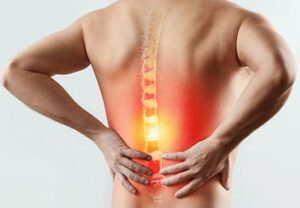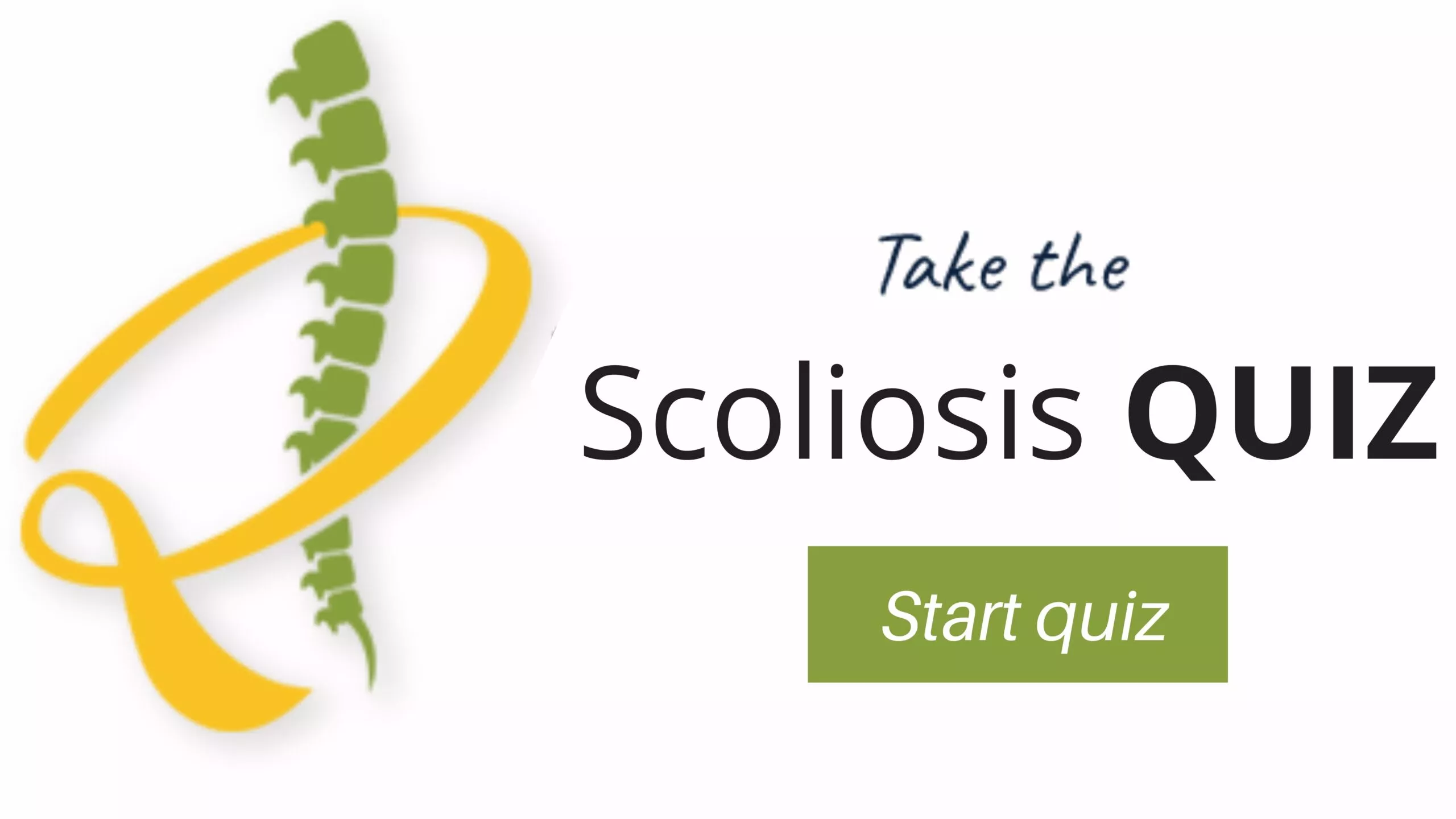
BERTOLOTTI’S SYNDROME
Bertolotti’s Syndrome, also known as lumbosacral transitional vertebra (LSTV), describes chronic back pain linked to an anatomical variation in the spine. The lowest lumbar vertebra (L5) abnormally articulates with the sacrum, causing irregular movement and potential impingement. This can lead to pain in the lower back, and buttocks, or radiate down the leg, mimicking sciatica.
3 percent of individuals with progressive curvature may eventually experience severe problems that can include scoliosis and back pain, spinal problems, and nerve compression causing numbness, weakness, and leg pain.
Understanding Bertolotti’s Syndrome:
 Bertolotti’s Syndrome, named after the Italian physician Mario Bertolotti who first described it in 1917, is a rare and often misunderstood condition that affects the lower spine. This syndrome typically involves an abnormal connection between the lowest lumbar vertebra and the uppermost sacral vertebra, leading to various symptoms and discomfort. Understanding this condition, its impact on an individual’s quality of life, and the available treatment options is crucial for effective management and relief.
Bertolotti’s Syndrome, named after the Italian physician Mario Bertolotti who first described it in 1917, is a rare and often misunderstood condition that affects the lower spine. This syndrome typically involves an abnormal connection between the lowest lumbar vertebra and the uppermost sacral vertebra, leading to various symptoms and discomfort. Understanding this condition, its impact on an individual’s quality of life, and the available treatment options is crucial for effective management and relief.
Definition:
Bertolotti’s Syndrome, also known as lumbosacral transitional vertebrae (LSTV), refers to an anatomical variant where there is an abnormal articulation between the last lumbar vertebra (L5) and the sacrum (S1). This structural anomaly can lead to altered biomechanics of the spine, resulting in pain and dysfunction in the lower back region. Meanwhile, the severity of symptoms can vary widely among individuals, ranging from mild discomfort to debilitating pain that significantly affects daily activities and quality of life.
Causes:
The exact cause of Bertolotti’s Syndrome is not fully understood, but it is believed to result from developmental anomalies during fetal growth and spinal maturation. In some cases, genetic factors may predispose individuals to this condition. Additionally, repetitive stress or trauma to the lower back region can exacerbate symptoms and contribute to the progression of the syndrome over time.
Symptoms:
Symptoms of Bertolotti’s Syndrome can vary in severity and presentation, depending on the extent of the abnormal vertebral connection and associated changes in spinal biomechanics. Common symptoms include:
- Chronic lower back pain typically localized to the affected side
- Radiating pain or numbness in the buttocks, hips, or legs
- Stiffness and limited range of motion in the lower spine
- Muscle spasms or weakness in the lower back and pelvic region
- Difficulty standing, walking, or performing activities that involve bending or lifting
Questions and Answers
What is causing my chronic lower back pain, and how is it related to Bertolotti's Syndrome?
Bertolotti’s Syndrome is a condition characterized by an abnormal connection between the last lumbar vertebra (L5) and the sacrum (S1). This structural anomaly can lead to altered biomechanics of the spine, resulting in chronic lower back pain. The pain typically originates from the affected area and may radiate into the buttocks, hips, or legs. Imaging studies such as X-rays or MRI scans can help confirm the diagnosis and assess the extent of vertebral abnormalities.
What treatment options are available for managing Bertolotti's Syndrome, and how effective are they?
The treatment approach for Bertolotti’s Syndrome depends on the severity of symptoms and the impact on daily functioning. Conservative measures such as physical therapy, medications, and lifestyle modifications are often recommended as initial management strategies. Physical therapy focuses on strengthening the core muscles, improving spinal stability, and enhancing flexibility to alleviate pain and improve function. In cases where conservative measures fail to provide adequate relief, surgical intervention may be considered to stabilize the abnormal vertebral segment and alleviate symptoms. The effectiveness of treatment varies depending on individual factors such as the extent of vertebral anomalies, overall health status, and response to therapy.
What are the long-term implications of Bertolotti's Syndrome, and how can I prevent complications or recurrence?
Living with Bertolotti’s Syndrome requires ongoing management and vigilance to prevent complications and maintain spinal health. Long-term implications may include chronic pain, limited mobility, and potential exacerbation of symptoms over time. To minimize the risk of complications or recurrence, it is essential to adhere to a comprehensive treatment plan, including regular follow-up appointments, physical therapy, and lifestyle modifications. Practicing good posture, maintaining a healthy weight, and avoiding activities that exacerbate symptoms can help prevent further progression of the syndrome and promote overall spinal health and well-being.
Diagnosis:
Diagnosing Bertolotti’s Syndrome requires a thorough medical history, physical examination, and imaging studies. X-rays, CT, or MRI scans. Accordingly, scans are commonly used to visualize abnormal vertebral articulation and assess its impact on surrounding structures. Additionally, diagnostic injections, such as facet joint or nerve root blocks, will confirm the source of pain and rule out other potential causes of lower back symptoms.
Risk Factors:
While Bertolotti’s Syndrome can occur in individuals of any age, certain factors may increase the risk of developing this condition. These include:
- Congenital spinal abnormalities or variations in vertebral anatomy
- History of spinal trauma or repetitive stress injuries
- Family history of spinal disorders or musculoskeletal conditions
- Occupation or activities that involve repetitive bending, lifting, or twisting motions
Non-Surgical Treatment:
The initial management of Bertolotti’s Syndrome typically involves conservative measures aimed at relieving pain and improving function. Non-surgical treatment options may include:
- Physical therapy: Targeted exercises to strengthen the core muscles, improve spinal stability, and enhance flexibility can help alleviate symptoms. In addition, they will also prevent further progression of the syndrome.
- Medications: Non-steroidal anti-inflammatory drugs, muscle relaxants, and pain relievers may reduce inflammation and alleviate pain associated with Bertolotti’s Syndrome.
- Epidural steroid injections: Corticosteroid injections into the affected spinal region can provide temporary relief from pain and inflammation. In light of this treatment, will allow for more effective participation in physical therapy and rehabilitation programs.
- Lifestyle modifications: Avoiding activities that exacerbate symptoms, maintaining a healthy weight, and practicing good posture and body mechanics can help minimize discomfort. Clearly, these activities will help prevent the worsening of symptoms over time.
Surgical Treatment:
In cases where conservative measures fail to provide adequate relief or symptoms significantly impair daily functioning, doctors may recommend surgery. Basically, surgical treatment options for Bertolotti’s Syndrome may include:
- Decompression surgery: Surgical decompression of nerve roots or spinal cord compression to alleviate symptoms such as radiating pain, numbness, or weakness.
- Spinal fusion: Fusion surgery will stabilize the abnormal vertebral segment and reduce abnormal motion. Thereby, relieving pain and improving spinal alignment. Moreover, this procedure may involve the use of bone grafts, implants, or metal hardware to promote fusion and stability of the spine.
Complications:
Like any surgical procedure, there are potential risks and complications associated with surgical treatment for Bertolotti’s Syndrome. Furthermore, these may include infection, bleeding, nerve damage, spinal fluid leakage, or failure of fusion. However, with advancements in surgical techniques and postoperative care, the risk of complications has significantly decreased. Consequently, most patients experience successful outcomes with appropriate treatment and rehabilitation.
Physical Therapy Recommendations:
Physical therapy plays a crucial role in the management of Bertolotti’s Syndrome, both before and after surgical intervention. A customized physical therapy program may include:
- Manual therapy techniques: Hands-on manipulation of soft tissues and joints to improve mobility, reduce pain, and restore normal movement patterns.
- Therapeutic exercises: Specific exercises targeting core stability, spinal flexibility, and muscle strength can help alleviate symptoms, improve posture, and prevent pain.
- Modalities: Heat or cold therapy, ultrasound, electrical stimulation, or traction may be used to reduce pain, inflammation, and muscle spasms.
- Education and self-management strategies: Patients are educated on proper body mechanics, ergonomic principles, and lifestyle modifications to optimize spinal health. Thus, patients can prevent future injuries or exacerbations of symptoms.
Prevention Actions:
While the development of Bertolotti’s Syndrome cannot always be prevented, certain measures can help reduce the risk of symptomatic progression. These include:
- Maintaining a healthy lifestyle: Regular exercise, proper nutrition, adequate hydration, and weight management can support musculoskeletal health and reduce the risk of spinal disorders.
- Practicing proper body mechanics: Using proper lifting techniques, avoiding excessive bending or twisting motions, and maintaining good posture can help prevent spinal injuries.
- Seeking early intervention: Prompt evaluation and treatment of spinal abnormalities, injuries, or symptoms can prevent complications and minimize the impact of spinal conditions.
Related Conditions:
Bertolotti’s Syndrome may coexist with or predispose individuals to other spinal conditions, including:
- Degenerative disc disease
- Facet joint arthritis
- Lumbar spinal stenosis
- Spondylolisthesis
- Sacroiliac joint dysfunction
- Lumbar Herniated disc
Living with the Condition:
Living with Bertolotti’s Syndrome can be challenging, particularly for individuals experiencing chronic pain and functional limitations. However, with proper diagnosis, treatment, and ongoing management, many patients can effectively manage their symptoms and maintain an active lifestyle. Finally, individuals with this condition should engage in physical activity, practice good self-care, and seek support from healthcare professionals. In addition, support groups can help individuals cope with the physical and emotional challenges associated with this condition.
Long-Term Benefits of Treatment:
The long-term benefits of effective treatment for Bertolotti’s Syndrome include:
- Pain relief: Successful management of symptoms can significantly reduce or eliminate chronic pain, improving overall quality of life and functional capacity.
- Improved mobility: Physical therapy, surgical intervention, and lifestyle modifications can enhance spinal flexibility, stability, and range of motion. Also, it will allow individuals to engage in daily activities with greater ease and comfort.
- Prevention of complications: Early diagnosis and appropriate treatment can prevent the progression of spinal deformities, nerve compression, or complications associated with Bertolotti’s Syndrome. With that said, seeing a doctor for suspecting something is wrong promotes long-term spinal health and function.
Choosing the Southwest Scoliosis and Spine Institute:
When it comes to specialized care for complex spinal conditions like Bertolotti’s Syndrome, choosing the right healthcare provider is crucial. At the Southwest Scoliosis and Spine Institute, our team of highly skilled and experienced spine specialists, including Doctors Richard A. Hostin, Devish Ramnath, and Ishaq Syed, are dedicated to providing compassionate, personalized care for patients with Bertolotti’s Syndrome and other spinal disorders. With state-of-the-art facilities, advanced diagnostic technologies, and a comprehensive range of treatment options, we are committed to helping patients achieve optimal outcomes and regain their quality of life.
Whether through conservative management or surgical intervention, our multidisciplinary approach ensures that each patient receives individualized care tailored to their unique needs and preferences. With a focus on patient education, empowerment, and support, we strive to guide our patients through every step of their treatment journey, promoting healing, recovery, and long-term well-being.
Conclusion:
Bertolotti’s Syndrome is a complex spinal condition that can significantly impact an individual’s quality of life. Furthermore, it causes chronic pain, functional limitations, and emotional distress. However, with timely diagnosis, appropriate treatment, and comprehensive care, patients can effectively manage their symptoms and achieve favorable outcomes. From conservative measures like physical therapy and medication to surgical interventions such as decompression or fusion surgery. Therefore, there is a range of treatment options available to address the unique needs of each patient.
By choosing a specialized spine institute like the Southwest Scoliosis and Spine Institute, patients can access expert care from leading spine specialists. Additionally, our patients benefit from state-of-the-art treatment modalities, innovative technologies, and compassionate support throughout their treatment journey. With a focus on personalized care, a patient-centered approach, and a commitment to excellence, the Southwest Scoliosis and Spine Institute is dedicated to helping patients with Bertolotti’s Syndrome reclaim their health, mobility, and overall well-being.
____________________
Oxford Academic: Bertolotti’s Syndrome
We’re here to help STOP THE PAIN
If you are an adult living with scoliosis or have a child with this condition and need a doctor who specializes in orthopedic surgery,
call the Southwest Scoliosis and Spine Institute at 214-556-0555 to make an appointment today.


